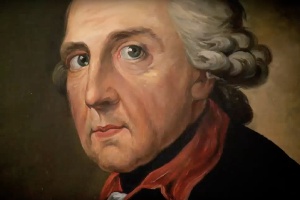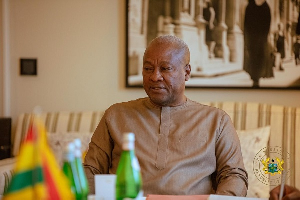The history of modern Public Relations practice affords many glorious and distasteful examples.
The latter include public health disasters (for example, cigarette smoking and cancer) and armed conflict (example, the Iraq War).
PR practice is not the preserve of specially trained and certified people, for, PR is human communication itself.
‘You cannot not communicate’, says the axiom of communication, which means all humans communicate and whatever they communicate, verbal or otherwise, will be analysed and acted on.
The negative effects of modern PR practice which has its roots in the USA, are still with us.
Today, Public Relations Ethics is a mandatory topic in virtually every PR course.
Given the current milieu of PR ethical breaches around the world, perhaps it is time we returned to Europe, to the Aufklarung…the Enlightenment…..for some guidance.
‘My principal occupation is to combat ignorance and prejudice…to enlighten minds, cultivate morality, and to make people as happy as it suits human nature, and as the means at my disposal permit’, says Frederick the Great, the FREDERICUS of Prussian discipline.
Does this quotation not qualify as a definition of PR?
Does ‘…to combat ignorance and prejudice…to enlighten minds…’ not emphasise the importance of public relations research; gathering and processing facts and evidence before engaging our stakeholders and publics?
How else do we enlighten the mind but by a daily didactic learning, which is a systematic, combative engagement of our ignorance and prejudices?
Is this not the much respected “two-way communication model” used to distinguish PR from Advertising which is viewed as one-way communication?
Is the methodological procedure required to obtain data to combat ignorance not what makes PR more of a science rather than an art?
Does it not fit into the definitions that emphasise the “two-way symmetrical model” where FREDERICUS says ‘…to make people happy…as the means at my disposal permit’?
Does ‘…as the means at my disposal permit’ not suggest equality and mutual respect while working within your employer’s organizational goals and expectations?
And when you top it all with ‘…to enlighten minds…cultivate morality…’ as your dessert, does it not offer us a full seven-course dinner?
After all, how did Edward Bernays, the acknowledged father of modern Public Relations define his practice which today we seek to emulate?
Bernays stated, ‘Public Relations is the engineering of consent’ in his book, Crystallizing Public Opinion (1923).
Unfortunately, Bernays’ PR practice record led to many immoral and disagreeable results.
I have performed a content analysis of at least 30 Public Relations definitions, none of which explicitly mentions morals or ethics; the focus is always on emphasising the activities, functions or roles of PR.
The website of the International Public Relations Association (IPRA) says, ‘….when in the late 1940s several Dutch and British public relations (PR) practitioners discussed the notion of organizing public relations professionals into a transnational society….the objective was to raise standards of public relations practice worldwide and improve the quality of PR practitioners…IPRA was formally established in London on 1 May 1955’.
Given the relative youthfulness of modern PR and the international body the IPRA, Ghana at Independence in 1957 could only have inherited a limited or nascent public relations practice from the colonial establishment, as compared with say, teaching practice or nursing training.
‘How to square achieving organizational goals with serving the public interest is a conundrum lying at the heart of PR’, says Paul Seaman, CEO of West PR-Seaman at www.ipra.org.
Seaman, in his article, Definitions of PR: Keeping it Honest, disagreed with the Canadian Public Relations Society’s (CPRS) definition for PR.
He opined, ‘It may be best to leave the public interest out’ of the CPRS’s campaign for global adoption of their definition.
On the other hand, many PR practitioners opt for simplicity by asserting that PR is defined by its practice; PR is what PR does; a two-way model will always remain an impractical ideal because he who pays the piper calls the tune.
This is PR: The Realities of Public Relations by Doug Newsom et al, is a famous PR book that has gone through at least 14 editions from 1976 to 2013.
All these 14 editions including online versions updated regularly have documented the best practice of PR for over 40 years, especially in America, where Bernays gave the discipline its modern parameters and academic literature.
Using Doug Newsom et al as an honest guide, we can agree with Seaman when he says, ‘The honest PR would admit that PR [practitioners] dress up A as B’.
If we accept Seaman’s perspective, that PR is defined by its practice, then each practitioner needs a personal definition, a moral and intellectual guide that will ensure that (her)his conduct, heart and conscience are all free of scandal.
The practitioner’s working definition of PR; the practitioner’s moral and intellectual guide to the best practice of PR has been eloquently and succinctly provided by King Frederick the Great (24 January 1712 – 17 August 1786).
‘My principal occupation is to combat ignorance and prejudice…to enlighten minds, cultivate morality, and to make people as happy as it suits human nature, and as the means at my disposal permit.’
PR practitioners in Ghana do not have a nationally accepted definition because the Institute of Public Relations Ghana (IPR-Ghana), ‘the sole professional body for Public Relations practitioners in Ghana’, does not have any.
Is IPR-Ghana ready to adopt this definition as an alternative definition of PR?
They should, as a matter of urgency.
Email: ato@writersghana.com
Opinions of Monday, 15 October 2018
Columnist: Isaac Ato Mensah



















